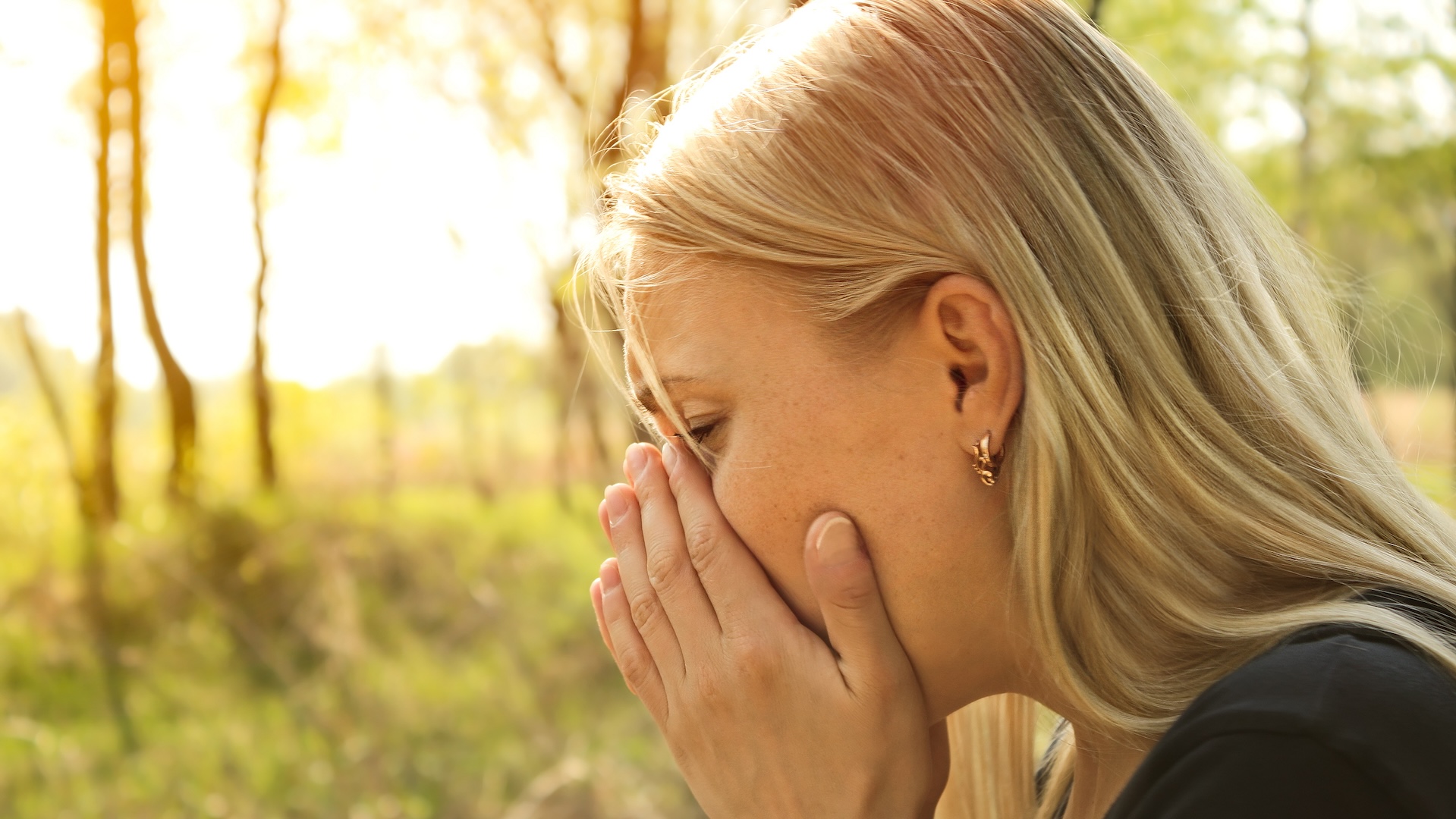
Why does the sun make people sneeze?
People who sneeze in bright lights, like the sun, may have autosomal dominant compelling helio-ophthalmic outburst syndrome, or ACHOO.

When you step outside from a dark building into the full glare of the sun, do you suddenly have the urge to sneeze? If so, you're not alone — as many as 1 in 3 people display this reaction.
This reflex, called the photic sneeze reflex, has been observed since at least the fourth century B.C., when the ancient Greek philosopher and scientist Aristotle posed the question, "Why is one more apt to sneeze after looking at the sun?"
The photic sneeze reflex is also known as "autosomal dominant compelling helio-ophthalmic outburst syndrome," according to the Cleveland Clinic, or ACHOO. This reflex is an autosomal dominant genetic trait, meaning a person has a 50% chance of inheriting this reaction to light if one of their biological parents has it, according to the National Center for Biotechnology Information.
Photic sneezing usually happens after exposure to a bright light such as sunlight and most often when moving from darkness to light, such as after turning on the lights in a dark room. "It's not triggered by a special wavelength of light — it's caused by a change in light intensity," Dr. David Lang, chairman of the Department of Allergy and Clinical Immunology in the Respiratory Institute at the Cleveland Clinic, told Live Science.
The severity of the photic sneeze reflex can vary from person to person. For some, photic sneezes only happen occasionally. For others, bright lights can trigger uncontrollable sneezing multiple times in a row, the Cleveland Clinic noted.
Related: What happens when a baby takes its first breath?
A 1995 study found that 33% of about 370 patients questioned at an Alabama eye clinic experienced photic sneezing. A more recent 2019 study in China discovered around 25% of about 3,400 people examined displayed the reaction.
Sign up for the Live Science daily newsletter now
Get the world’s most fascinating discoveries delivered straight to your inbox.
Scientists are still unsure exactly what triggers photic sneezing. One possibility is that bright light may stimulate the trigeminal nerve, which has branches pervading the face. Light that stimulates the branch leading to the eye may end up also stimulating the branch that leads to the nose, Lang said.
In a 2010 study, researchers at genetic testing company 23andMe in California discovered two mutations linked with photic sneezing. In addition, the 1995 Alabama study found that photic sneezing may also be linked to having a deviated nasal septum. A 2019 study in Japan, meanwhile, discovered a potential link between this reflex and migraines.
Photic sneezing is generally completely benign, "although it might increase the risk of an accident on the highway, or if you're performing as an acrobat or in the outfield," Dr. William Howland, the medical director of Orion Clinical Research in Austin, told Live Science. "The main way to manage photic sneezing is to wear sunglasses when you go out. Antihistamines that typically affect allergies do not affect this reflex"
Another potential way to prevent photic sneezing "is by applying pressure to philtrum, the groove under the middle of your nose, with your finger horizontally," Lang said. "Kind of like giving yourself a mustache with your finger." A 2019 study in Australia suggests this pressure may either override the irritation that the trigeminal nerve may experience from bright light, or interfere with nerve signals that may help trigger photic sneezing.











